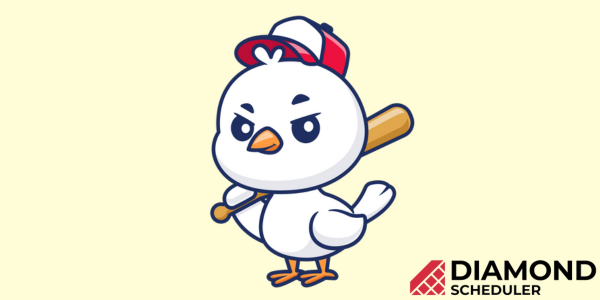
Preventing Arm Injuries with Little League Pitch Count
Little League Pitch Count is a method used in amateur and youth baseball leagues worldwide to keep track of how many pitches a pitcher throws during a game. It is intended to safeguard young pitchers from overuse and to minimize the likelihood of injury.
The system works by limiting the number of pitches a pitcher can throw in a game based on age. The rules for Little League Pitch Count vary based on the level of play, but the allotted number of pitches per player generally increases with age group.
A pitcher must be pulled from the pitching position once they have reached their maximum pitch count for the game. Also, rest days between games are mandated based on the number of pitches thrown in the preceding game.
The Little League Pitch Count system is vital for safeguarding young baseball players' safety and well-being. It assists coaches and parents in monitoring pitch counts and preventing young pitchers from being overworked, which can result in injury and long-term arm damage.
The Pitch Smart guidelines have been implemented into the Little League regulations and have helped to keep players across the league healthy. This article will review the Litte League Pitch Count rules across age groups, rest days requirements, and in-game specifics and exceptions. First, we'll start by explaining how exactly the Little League Pitch Count works, referencing the Little League Player Rule Book and breaking down the pitch counts for each division in the Little League.

How does the Little League pitch count work?
A player's eligibility to pitch in a Little League® Baseball game is determined by a tiered pitch count connected to the number of pitches thrown in a game. The pitch count defines how many days a player must recover before returning to a Little League game. The pitch count differs for each age group, but the same rules and exceptions apply.
Pitch counts by league age
6 to 8 years old: 50 pitches per day
9 to 10 years old: 75 pitches per day
11 to 12 years old: 85 pitches per day
13 to 16 years old: 95 pitches per day
There is, however, an exception to these limits if a pitcher is to reach the imposed count in the midst of facing a batter still at home base.
Exceptions
If a pitcher hits the league age restriction set by Regulation VI(c) while facing a batter, the pitcher may proceed to pitch until one of the following events occurs:
The batter reaches base
The batter is put out
The third out is made to complete the half-inning of the game
The pitcher is removed from the mound before the batter completes his/her at bat.
Required rest days
Pitchers must take rest days in order to protect their developing arms from overuse damage. Throwing a baseball puts a lot of pressure on a pitcher's arm. If they don't recover enough between games, they can suffer arm problems, including tendinitis, strains, or ligament tears.
Rest is necessary to allow the arm to recover from the stress of pitching. The quantity of rest necessary is determined by the number of pitches thrown during the game as well as the age of the pitcher. To ensure pitchers have enough time to recover between games, Little League rules require precise rest periods between pitching appearances based on the number of pitches thrown.
Imposing obligatory rest days helps preserve the health and safety of young pitchers while ensuring that they can continue to play at a high level and enjoy their time on the field.
Here is a breakdown of the required days of rest per Little League division:
Rest rules for pitchers aged 14 and younger
If a player pitches 66 or more in a day, four calendar days of rest must be observed.
If a player pitches 51-65 in a day, three calendar days of rest must be observed.
If a player pitches 36-50 pitches in a day, two calendar days of rest must be observed.
If a player pitches 21-35 in a day, one calendar day of rest must be observed.
If a player pitches 1-20 pitches in a day, no calendar day of rest is required.
Rest rules for pitchers aged 15 to 16
If a player pitches 76 or more pitches in a day, four calendar days of rest must be observed.
If a player pitches 61-75 in a day, three calendar days of rest must be observed.
If a player pitches 46-60 in a day, two calendar days of rest must be observed.
If a player pitches 31-45 in a day, one calendar day of rest must be observed.
If a player pitches 1-30 pitches in a day, no calendar day of rest is required.
One, a player cannot pitch in three consecutive games under any circumstances.
Two, a player's pitch count is determined by the first pitch thrown to a batter in the game. Once the limit has been reached, the player may finish pitching to the batter at the base but not pitch to any new batters.
Other important pitch count rules
The Little League Official Playing Rules handbook outlines many other supplementary rules that work to protect player safety and prevent injury.
Those rules include aspects like who records the pitch count, how and if pitchers can play in other positions after meeting the pitching limits, and other important things to consider.
Here is a breakdown of those regulations referenced directly from the Little League official playing rules handbook:
1. Any regular-season team player may pitch.
Exception: Any player who has played catcher in a game for four innings or more is ineligible to pitch on that calendar day.
A player that played catcher for three innings or fewer on the same day, then switches positions to pitcher, and throws 21 pitches or more (15 and 16-year-olds: 31 pitches or more), is not allowed to switch back to the position of catcher on that day.
Exception:
If a pitcher exceeds the 20-pitch limit (15 and 16-year-olds: 30-pitch limit) while facing a batter, the pitcher may continue to pitch and remain eligible to return to the catcher position until one of the following events occurs:
1. the batter reaches base 2. the batter is retired 3. the third out is made to end the half-inning or game 4. the pitcher is taken off the mound before the batter completes 2. Once a pitcher is removed from the mound, they cannot return to the position of a pitcher.
3. Once a pitcher reaches the limit for their Little League age division, the manager must remove the player from the pitcher position; However, the player may remain in the game but, play a different position.
4. Each league must designate the scorekeeper or another game official as the official pitch count recorder.
5. When the manager or an umpire requests it, the pitch count recorder must disclose the current pitch count for any pitcher. Conversely, the manager is accountable for knowing when their pitcher must be pulled.
6. When a pitcher has delivered their maximum limit of pitches for the game, the official pitch count recorder should notify the Umpire-in-Chief, as specified in Rule VI (c). The Umpire-in-Chief will notify the pitcher's manager that the pitcher must be removed per Rule VI (c). The failure of the pitch count recorder to notify the Umpire-in-Chief and/or the Umpire-in-Chief to notify the manager, on the other hand, does not absolve the manager of the responsibility to remove a pitcher when that pitcher is no longer eligible.

Frequently asked questions
How to prevent arm injuries with Little League pitch count?
Safeguarding young pitchers and minimizing injury is a priority for every athlete, coach, and parent. The Little League Pitch Count system is a vital tool that helps prevent young pitchers from being overworked by monitoring pitch counts based on age groups. Pitch counts by league age
6 to 8 years old: 50 pitches per day
9 to 10 years old: 75 pitches per day
11 to 12 years old: 85 pitches per day
13 to 16 years old: 95 pitches per day
Is there a pitch count in the Little League World Series?
Yes, the Little League World Series adheres to the same pitch count regulations that are in place for regular season games.
Can a Little League pitcher pitch three days in a row?
No, under no circumstances may a pitcher pitch in three consecutive games.
How many pitches can a pitcher throw in a Little League game and still catch?
A pitcher may play as a catcher in the same game as long as they do not throw over 40 pitches in the same game.
How many pitches are allowed per pitcher?
This is determined by League age group:
13 to 16 year olds – 95 pitches per day
11 to 12 year olds – 85 pitches per day
9 to 10 year olds – 75 pitches per day
6 to 8 year olds – 50 pitches per day
To recap
To summarize, the Little League Pitch Count is an important rule designed to ensure the health and safety of young baseball players. Limiting the number of pitches, a player can throw in a game or per week helps prevent injuries that can lead to long-term harm.
The Pitch Count must be enforced by coaches, parents, and league officials to guarantee that players are not exceeding their limitations. While some may claim that the Pitch Count limits players' ability to develop their talents, preventing injury and encouraging safe play, outweigh any potential disadvantages.
Finally, the Little League Pitch Count is an important component of safe youth sports and should be followed in all Little League games. See also Regular season pitching rules Managing little league pitch count
Jeff Tipper is an avid sports fan who has a strong passion for basketball. A graduate of the University of New Mexico with a Bachelor's Degree in Operations Management, Jeff has experience in operations and claim processing and spends his free time writing articles and blogs focused on sports and various business topics.



